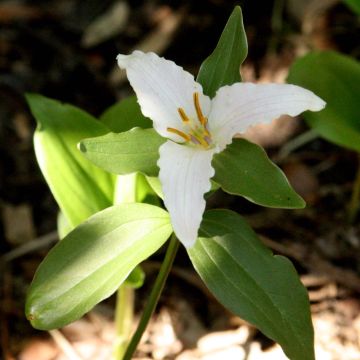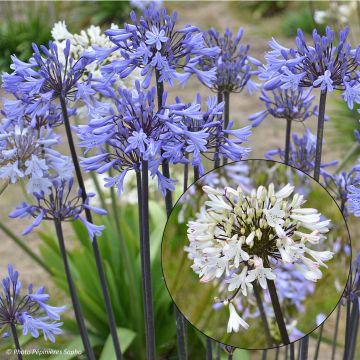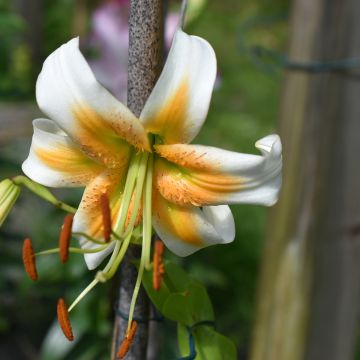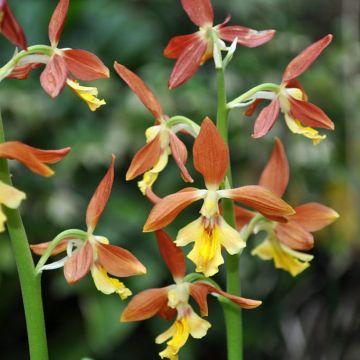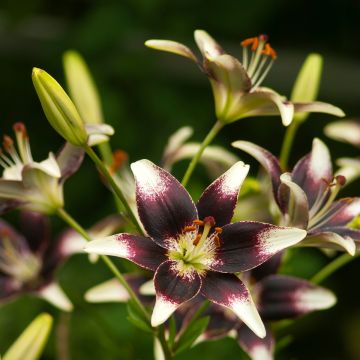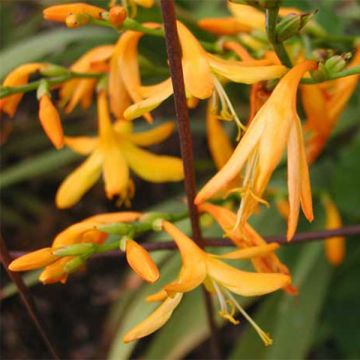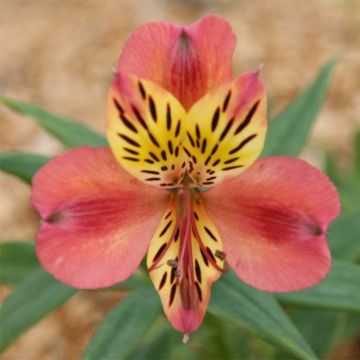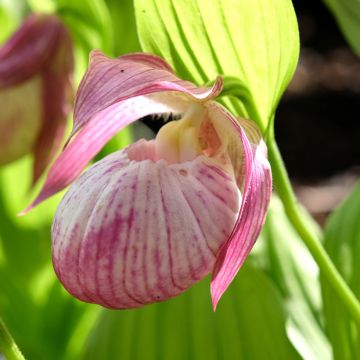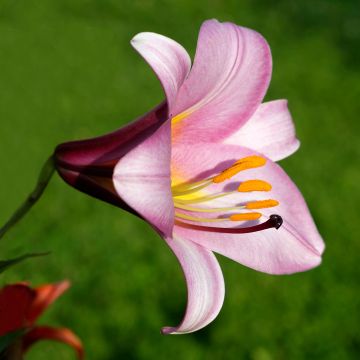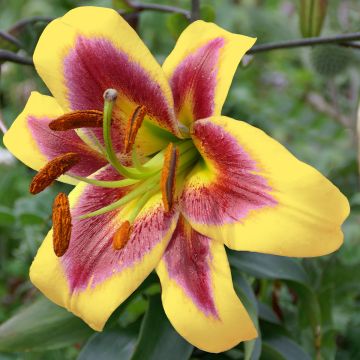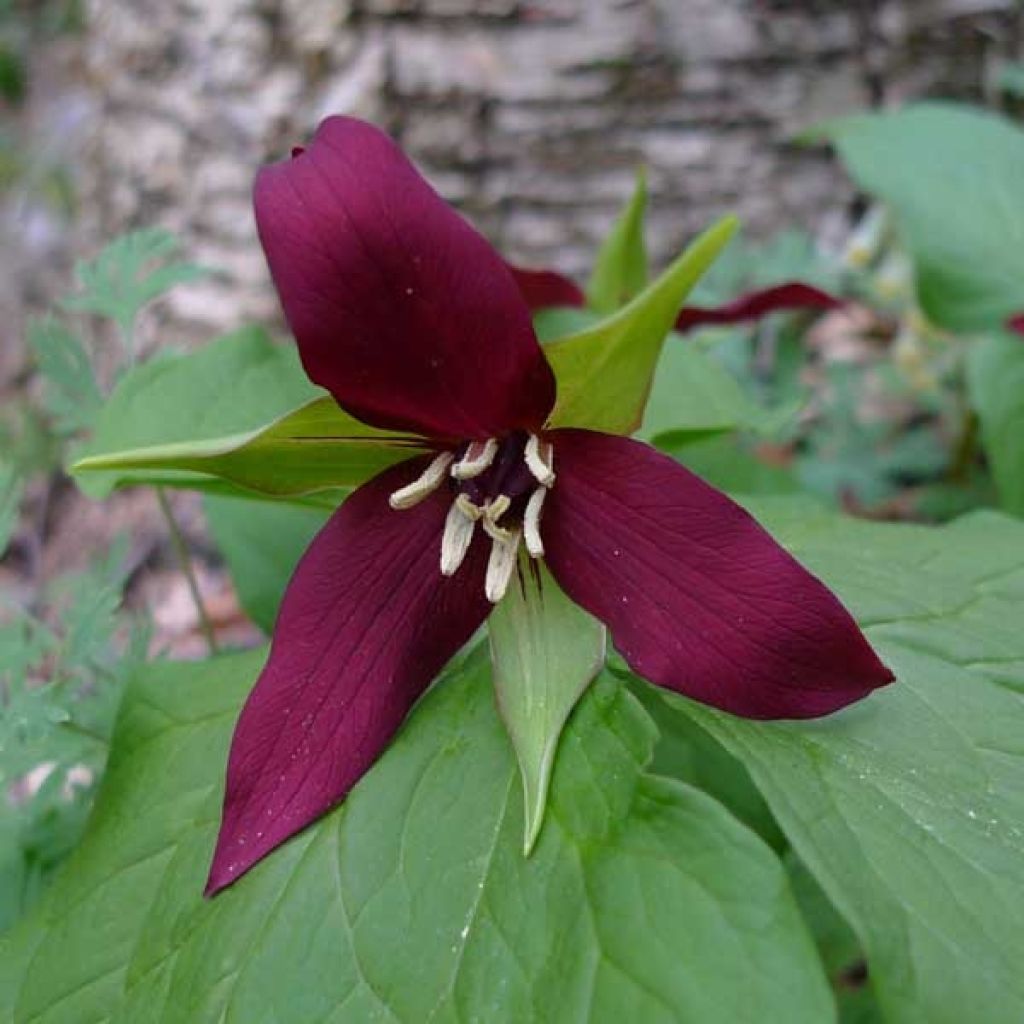

Trillium erectum
Trillium erectum
Trillium erectum
Birthroot, American shamrock, Bathroot, Bethroot, Bloody nose, Bumblebee root, Death root, Dog flower, Ground lily, Indian balm, Lamb's quarters, Lamb's succory, Orange blossoms, Red Benjamin, Stinking Benjamin, Herb Paris, Nosebleed, True love
This item cannot be shipped to the selected country
Delivery charge from €5.90
More information
Schedule delivery date,
and select date in basket
This plant carries a 6 months recovery warranty
More information
We guarantee the quality of our plants for a full growing cycle, and will replace at our expense any plant that fails to recover under normal climatic and planting conditions.
From €5.90 for pickup delivery and €6.90 for home delivery
Express home delivery from €8.90.

Does this plant fit my garden?
Set up your Plantfit profile →
Description
Trillium erectum is part of a group of wild plants native to North America and Asia. They are quite rare in cultivation, but are highly sought after by collectors of rare and precious plants. This American species bears large dark red flowers, which are unusual and beautiful. It is relatively easy to grow by knowledgeable gardeners, in moist non-limestone soil. Rising above a cluster of leaves, its star-shaped flower blooms in spring, emitting an unpleasant scent intended to attract pollinating flies. It will be stunning when planted en masse in a wooded garden or in an exotic-inspired bed. It should always grow in filtered light.
Trillium erectum, long classified in the Liliaceae family, now belongs to the Melanthiaceae family. It is a distant North American cousin of the fragrant Solomon's seal that populates European forests. It is native to the eastern United States, from eastern Canada to Georgia, where it blooms in spring in deciduous forests, before the trees leaf out. It has received the Royal Horticultural Society Award of Garden Merit for its ornamental qualities and performance in the garden.
Trilliums are unique plants that do not develop true stems or true leaves. The vegetation that emerges in spring is just a flowering structure, composed of an erect petiole, which is an extension of the rhizome. This structure bears a colourful flower that rises above bracts resembling leaves. The tiny and scale-like true leaves are located on the flower's petiole.
Trillium erectum is an herbaceous and perennial plant. It grows in spring from a fleshy and thick underground rhizome that does not like to be disturbed. It goes dormant as soon as the soil dries out, either during summer or in autumn due to the cold. The plant produces thin leafy stems that stand 40 to 50cm (16 to 20in) above the ground. Thanks to its rhizomes, it will slowly form small colonies occupying at least 30cm (12in) of ground. Each stem bears only 3 beautiful leaves inserted at the same level on the stem, arranged horizontally in a collar-like formation. The vibrant green 20cm (8in) long leaves are rounded to lanceolate in shape, beautifully undulated, and display prominent parallel veins.
Flowering occurs in April-May, depending on the climate. They appear 3 or 4 cm (1 or 2in) above the trio of leaves. The flower is slightly inclined, measuring 6 to 8cm (2 to 3in) wide. It is composed of 3 slender and slightly recurved petals in a deep red colour, nestled between 3 small triangular sepals of a vibrant green colour, arranged in a staggered pattern. This flowering emits a scent of decomposed meat, which attracts pollinating flies. Each flower lasts 2 to 3 weeks before wilting. This species is very difficult to propagate by sowing. The seeds are often dispersed by ants. Plants grown from seeds can take several years before flowering.
Trillium erectum is slow to establish, but it is a faithful plant that lives for a long time and requires little care when it thrives. It should be planted in groups of 3 specimens in a shaded woodland or under dappled sunlight (introduce multiple plants in a small area). It prefers humus-rich, non-limestone soil that remains moist for as long as possible. It pairs well with other small perennials that enjoy the same conditions, but with staggered flowering or interesting foliage: consider ophiopogons, saxifrages, small ferns, and asarums. It can also be grown in pots, with careful monitoring of watering. In the ground or in pots, it always looks wonderful with Begonia grandis subsp. evansiana, which takes over after its flowering.
The Latin name Trillium derives from the fact that the different parts of these plants are ternary: from the unique cluster of three leaves on each stem, to the construction of the flower, composed of 3 green sepals, 3 coloured petals, six stamens, and 3 fused carpels.
Report an error about the product description
Plant habit
Flowering
Foliage
Botanical data
Trillium
erectum
Liliaceae (Melanthiaceae)
Birthroot, American shamrock, Bathroot, Bethroot, Bloody nose, Bumblebee root, Death root, Dog flower, Ground lily, Indian balm, Lamb's quarters, Lamb's succory, Orange blossoms, Red Benjamin, Stinking Benjamin, Herb Paris, Nosebleed, True love
North America
Other Trillium
Planting and care
Trillium erectum appreciates moist to wet soils during its growth and flowering period. It prefers slightly acidic to neutral humus-rich soils that are rich in leaf compost. Plant it in partial shade or not too dense shade. It requires sunlight during its flowering period, but shade in summer. The cover of deciduous trees or bushes with late leafing (fraxinus, Nyssa sylvatica, tetradium, robinia) suits it best. Plant it so that its rhizome is located 5 or 7cm (2 or 3in) below the soil surface. Dig a large hole and add leaf compost and well-decomposed compost at planting. Ensure that the soil never dries out in summer, otherwise the plant may enter dormancy too quickly, which sometimes happens in nature and does not harm the plant's health. Trillium erectum can withstand cold winters, below -15°C (5°F), even without ground mulching. Divide the clumps in spring, after a minimum of 5 to 6 years of cultivation.
It takes time to establish itself, and it is not uncommon to wait 2 years after planting before seeing it bloom for the first time.
Slugs and snails attack young shoots in spring so protect the plant.
Planting period
Intended location
Care
-
, onOrder confirmed
Reply from on Promesse de fleurs
Hardy summer bulbs
Haven't found what you were looking for?
Hardiness is the lowest winter temperature a plant can endure without suffering serious damage or even dying. However, hardiness is affected by location (a sheltered area, such as a patio), protection (winter cover) and soil type (hardiness is improved by well-drained soil).

Photo Sharing Terms & Conditions
In order to encourage gardeners to interact and share their experiences, Promesse de fleurs offers various media enabling content to be uploaded onto its Site - in particular via the ‘Photo sharing’ module.
The User agrees to refrain from:
- Posting any content that is illegal, prejudicial, insulting, racist, inciteful to hatred, revisionist, contrary to public decency, that infringes on privacy or on the privacy rights of third parties, in particular the publicity rights of persons and goods, intellectual property rights, or the right to privacy.
- Submitting content on behalf of a third party;
- Impersonate the identity of a third party and/or publish any personal information about a third party;
In general, the User undertakes to refrain from any unethical behaviour.
All Content (in particular text, comments, files, images, photos, videos, creative works, etc.), which may be subject to property or intellectual property rights, image or other private rights, shall remain the property of the User, subject to the limited rights granted by the terms of the licence granted by Promesse de fleurs as stated below. Users are at liberty to publish or not to publish such Content on the Site, notably via the ‘Photo Sharing’ facility, and accept that this Content shall be made public and freely accessible, notably on the Internet.
Users further acknowledge, undertake to have ,and guarantee that they hold all necessary rights and permissions to publish such material on the Site, in particular with regard to the legislation in force pertaining to any privacy, property, intellectual property, image, or contractual rights, or rights of any other nature. By publishing such Content on the Site, Users acknowledge accepting full liability as publishers of the Content within the meaning of the law, and grant Promesse de fleurs, free of charge, an inclusive, worldwide licence for the said Content for the entire duration of its publication, including all reproduction, representation, up/downloading, displaying, performing, transmission, and storage rights.
Users also grant permission for their name to be linked to the Content and accept that this link may not always be made available.
By engaging in posting material, Users consent to their Content becoming automatically accessible on the Internet, in particular on other sites and/or blogs and/or web pages of the Promesse de fleurs site, including in particular social pages and the Promesse de fleurs catalogue.
Users may secure the removal of entrusted content free of charge by issuing a simple request via our contact form.
The flowering period indicated on our website applies to countries and regions located in USDA zone 8 (France, the United Kingdom, Ireland, the Netherlands, etc.)
It will vary according to where you live:
- In zones 9 to 10 (Italy, Spain, Greece, etc.), flowering will occur about 2 to 4 weeks earlier.
- In zones 6 to 7 (Germany, Poland, Slovenia, and lower mountainous regions), flowering will be delayed by 2 to 3 weeks.
- In zone 5 (Central Europe, Scandinavia), blooming will be delayed by 3 to 5 weeks.
In temperate climates, pruning of spring-flowering shrubs (forsythia, spireas, etc.) should be done just after flowering.
Pruning of summer-flowering shrubs (Indian Lilac, Perovskia, etc.) can be done in winter or spring.
In cold regions as well as with frost-sensitive plants, avoid pruning too early when severe frosts may still occur.
The planting period indicated on our website applies to countries and regions located in USDA zone 8 (France, United Kingdom, Ireland, Netherlands).
It will vary according to where you live:
- In Mediterranean zones (Marseille, Madrid, Milan, etc.), autumn and winter are the best planting periods.
- In continental zones (Strasbourg, Munich, Vienna, etc.), delay planting by 2 to 3 weeks in spring and bring it forward by 2 to 4 weeks in autumn.
- In mountainous regions (the Alps, Pyrenees, Carpathians, etc.), it is best to plant in late spring (May-June) or late summer (August-September).
The harvesting period indicated on our website applies to countries and regions in USDA zone 8 (France, England, Ireland, the Netherlands).
In colder areas (Scandinavia, Poland, Austria...) fruit and vegetable harvests are likely to be delayed by 3-4 weeks.
In warmer areas (Italy, Spain, Greece, etc.), harvesting will probably take place earlier, depending on weather conditions.
The sowing periods indicated on our website apply to countries and regions within USDA Zone 8 (France, UK, Ireland, Netherlands).
In colder areas (Scandinavia, Poland, Austria...), delay any outdoor sowing by 3-4 weeks, or sow under glass.
In warmer climes (Italy, Spain, Greece, etc.), bring outdoor sowing forward by a few weeks.

































